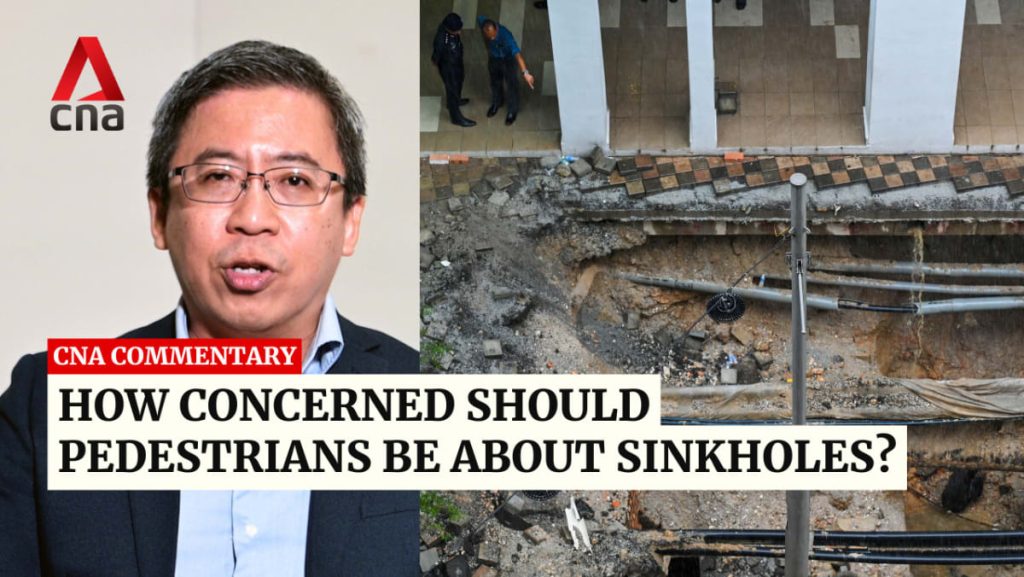Sinkholes are a natural phenomenon that can occur when the ground collapses, usually due to the erosion of underground rock layers. They can happen suddenly and without warning, posing a serious danger to anyone in the vicinity. In Kuala Lumpur, a woman fell into a sinkhole on Aug 23, highlighting the potential risks associated with these formations. Just a few days later, another sinkhole opened up in the same area, causing concern among residents and officials.
David Ng, a representative from the Institution of Engineers, Singapore, has commented on the situation, providing insight into the risks of sinkholes and how worried the public should be. Ng explains that sinkholes are relatively common in urban areas where underground construction can destabilize the ground. He emphasizes the need for proper monitoring and maintenance of infrastructure to prevent sinkholes from occurring. While sinkholes can be a serious hazard, Ng reassures the public that not all sinkholes are dangerous and can be easily filled in as a precautionary measure.
In recent years, there have been several incidents of sinkholes opening up in urban areas around the world, leading to injuries and property damage. These incidents have raised awareness about the potential risks of sinkholes and the importance of proper infrastructure maintenance. Ng stresses the importance of conducting regular inspections and tests to identify weak spots in the ground before they escalate into dangerous sinkholes. By addressing these issues proactively, the risk of sinkholes can be minimized.
The incident in Kuala Lumpur serves as a reminder of the unpredictable nature of sinkholes and the need for vigilance in monitoring potential hazards. Ng advises the public to report any signs of ground instability, such as cracks or depressions, to authorities immediately to prevent accidents from occurring. He also recommends that developers and contractors take precautions when conducting underground construction to avoid destabilizing the ground and triggering sinkholes. By being proactive in addressing potential risks, the likelihood of sinkhole incidents can be reduced.
While sinkholes may be a natural occurrence, human activities can exacerbate the risks associated with them. Ng suggests that proper planning and engineering practices can help mitigate the potential dangers of sinkholes in urban areas. By taking the necessary precautions and addressing underlying issues, sinkhole incidents can be minimized, protecting public safety and property. Ng’s insights shed light on the importance of understanding sinkhole risks and taking proactive measures to prevent accidents and damage in urban environments.
In conclusion, the recent incidents of sinkholes in Kuala Lumpur highlight the need for public awareness and proactive measures to prevent accidents and damage caused by these natural formations. David Ng’s expertise in the field of engineering provides valuable insights into the risks associated with sinkholes and the importance of proper infrastructure maintenance. By following Ng’s recommendations and staying vigilant in monitoring potential hazards, communities can better protect themselves from the dangers posed by sinkholes. Ultimately, through awareness and proactive action, the risks associated with sinkholes can be minimized, ensuring the safety and well-being of residents in urban areas.















